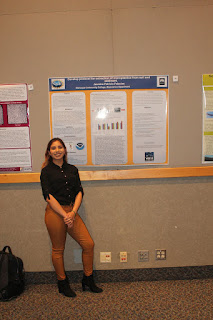Inside the SWAT Lab
So here’s what you missed out on in Beth’s
Lab:
Beth
brought back water samples from the Philippines in the form of Semipermeable Membrane
Devices) SPMD’s and Silicone Monitoring Device Wristbands. We are testing the accuracy
of the two different methods and see which method provides the best results on
water contamination.
The SPMD’s
are ‘a passive sampling device used
to monitor trace levels of organic contaminants. When placed in an aquatic
environment, SPMDs accumulate hydrophobic (water-“hating,” fat-“loving”)
organic compounds, such as polychlorinated biphenyls (PCBs), polyaromatic
hydrocarbons (PAHs), and organochlorine pesticides from the surrounding waters’
(NOAA). The silicon devices could be used as a passive sampler in aqueous
deployments. They are small, lightweight
that also monitor air pollution by absorbing chemicals. They are called ‘passive
because they do not require any maintenance or power to work’ (Oregon State
University, Passive wristband samplers).
SPMD’s Article : https://oceanexplorer.noaa.gov/technology/tools/spmds/spmds.html
Passive wristband Samplers : https://ehsc.oregonstate.edu/passive-wristband-samplers
Also take the time and read an
article written about Dr. Polidoro and her research by ASU Global Engagement.
‘Tiny little pieces of plastic are getting into everything, September
18, 2019’. Beth Polidoro and her ASU SWAT lab set out to make the oceans and
the seafood we eat safe from microplastics and other pollutants.


I been following your project through Francisco's blog. I find it so interesting that you got water from the Philippines to test. Are you going to compare the Philippines' water to the United States' water? I hope the two methods work and you guys find the more accurate one. Good luck o your project and miss you!
ReplyDelete